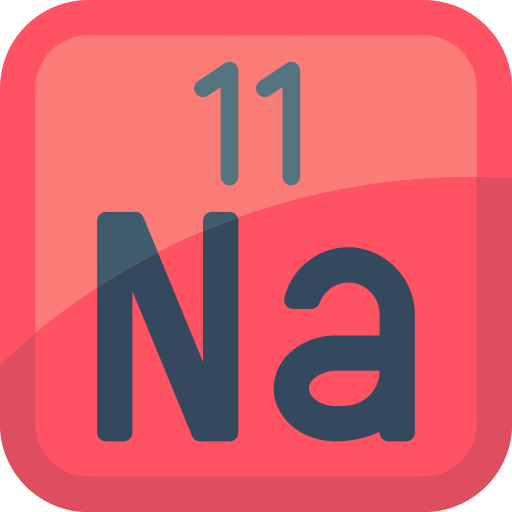
Chemical elements fact sheet
83 other teachers use this template
Subjects
Chemical elements fact sheet

Sodium
Sodium is a chemical element with the symbol Na (from Neo-Latin natrium) and the atomic number 11. It is a soft, silvery-white, highly reactive metal. Sodium is an alkali metal, being in group 1 of the periodic table. Its only stable isotope is 23Na. The free metal does not occur in nature and must be prepared from compounds. Sodium is the sixth most abundant element in the Earth's crust and exists in numerous minerals such as feldspars, sodalite, and halite (NaCl). Many salts of sodium are highly water-soluble: sodium ions have been leached by the action of water from the Earth's minerals over eons, and thus sodium and chlorine are the most common dissolved elements by weight in the oceans.
Sodium was first isolated by Humphry Davy in 1807 by the electrolysis of sodium hydroxide. Among many other useful sodium compounds, sodium hydroxide (lye) is used in soap manufacture, and sodium chloride (edible salt) is a de-icing agent and a nutrient for animals including humans. Sodium is an essential element for all animals and some plants. Sodium ions are the major cation in the extracellular fluid (ECF) and as such are the major contributor to the ECF osmotic pressure and ECF compartment volume.
Sodium at standard temperature and pressure is a soft silvery metal that combines with oxygen in the air, forming sodium oxides. Bulk sodium is usually stored in oil or an inert gas. Sodium metal can be easily cut with a knife. It is a good conductor of electricity and heat. Due to having low atomic mass and large atomic radius, sodium is the third-least dense of all elemental metals and is one of only three metals that can float on water, the other two being lithium and potassium. The melting point of sodium is 97.794°C and the boiling point is 882.940°C.
Sodium compounds are of immense commercial importance, being particularly central to industries producing glass, paper, soap, and textiles. The most important sodium compounds are table salt (NaCl), soda ash (Na2CO3), baking soda (NaHCO3), caustic soda (NaOH), sodium nitrate (NaNO3), di- and tri-sodium phosphates, sodium thiosulfate (Na2S2O3·5H2O), and borax (Na2B4O7·10H2O). In compounds, sodium is usually ionically bonded to water and anions and is viewed as a hard Lewis acid.
In the everyday context, sodium plays a crucial role, especially in the form of sodium chloride, commonly known as table salt. It is extensively used for seasoning and preserving food. Sodium is also vital for human health, regulating blood volume, blood pressure, osmotic equilibrium, and pH. The sodium-potassium pump in human cells is essential for nerve function and muscle contraction.
In summary, sodium is a highly reactive and essential element with significant roles in both industrial applications and biological systems. Its unique properties and widespread occurrence make it a vital component of many natural and human-made processes.

